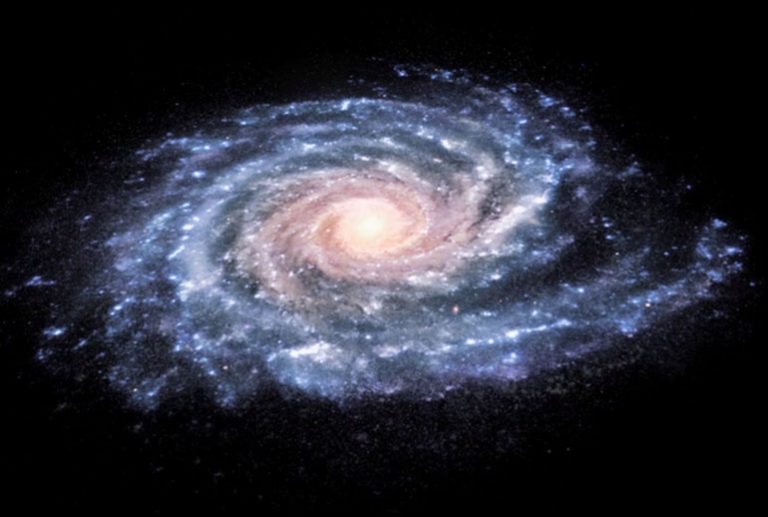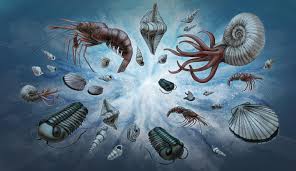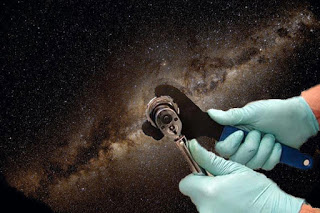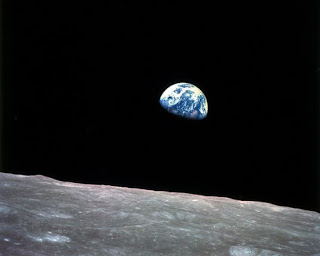Thermodynamics is the scientific study of energy and its transformations. Its origins trace back to the mid-nineteenth century, a time when what we now call “energy” was commonly referred to as “force.” The first two principles of thermodynamics, originally formulated with respect to “closed systems,” form the foundation of modern scientific thought.
A closed system is one that does not exchange matter with its environment, though it may still transfer energy in the form of heat or work. For example, if we analyze a liquid contained in a hermetically sealed vessel that is completely insulated from external influences like air, light, and temperature, then that vessel is considered a closed system. If we expand this concept by sealing off an entire laboratory—ensuring no external light, air, or sound can enter—the laboratory itself becomes a closed system for the purpose of studying the materials within.
The first law of thermodynamics, also known as the law of conservation of energy, states that within a closed system, energy is neither created nor destroyed—it merely changes form. Energy remains constant, though it may transform repeatedly. Consider the example of burning a piece of wood. The wood is transformed into ash, releasing energy in the form of heat and light. This energy did not come from outside the system; it was part of it all along. After combustion, the total energy remains the same, albeit in different forms. While proving this rigorously lies beyond the scope of this discussion, it is a well-established principle in any standard physics text.
The second law of thermodynamics, commonly referred to as the law of entropy[1]—and once described by Albert Einstein[2] as the “supreme law of all science”—states that, over time, the natural tendency in a closed system is for disorder, or entropy, to increase. This tendency can be observed everywhere. Objects wear out, decay, rust, break, disintegrate, rot, or fade. Complex and orderly matter gradually becomes simple and disordered. Think of the human body, which is intricate and highly organized. What becomes of it after two centuries? It eventually breaks down into a disorganized, dusty residue—ashes. Can this process of decay be stopped or reversed? Not within a closed system. However, if we expand the system—allowing external energy to be introduced—we can interfere with this process. For instance, if you were to lock up your house and leave it untouched for many years, you would return to find it in disrepair: dust, broken fixtures, possible structural collapse. Left to itself, the house cannot repair the damage. But if you open the system by re-entering it and applying energy in the form of labor and resources, you can restore it. The input of external energy changes the equation.
This law also complements the first. While the total amount of energy in a closed system remains unchanged, as the first law dictates, the second law explains that this energy becomes progressively less “useful.” Revisit the example of the burned wood. The ash, heat, and light produced are all forms of energy, but they are less reusable than the original unburned wood. You could attempt to recombine the remnants, but the energy output from a second combustion would be far lower than the first. With each successive transformation, the amount of usable energy decreases until it is no longer possible to extract meaningful work from it.
In the real world, entropy cannot be avoided, but it can be mitigated. This is the essence of engineering: designing systems that make better use of energy before it becomes too degraded to be of practical value. That is why terms like “efficiency” are so central in technical disciplines. When one motor is said to be more efficient than another, it means more of the input energy is being converted into useful work—a smaller portion of it is lost as heat, vibration, or noise. Still, according to the second law of thermodynamics, no machine can be perfectly efficient. Some portion of energy will always be lost in non-recoverable forms.
Energy persists, but its usefulness fades. This is the profound and unavoidable truth that thermodynamics teaches us—and it has implications that extend from engineering to everyday life.
The first and second laws of thermodynamics are often brought into discussions about the origin of the universe, particularly in debates over the existence of God. If we reject the notion of a Creator, the existence of the universe must still be rationally explained. According to the prevailing scientific narrative—commonly summarized in the “big story” (see Appendix C)—the universe began with a tremendous release of energy from an extremely dense and minuscule “ball” that suddenly exploded, initiating the expansion of space, time, and matter. This raises a fundamental question: What is the origin of that original “ball” of energy?
There are essentially three possible explanations: spontaneous generation (something from nothing), eternal existence (matter has always existed), or intentional creation (matter was brought into existence by an external agent).
The first hypothesis—spontaneous generation—stands in direct conflict with the first law of thermodynamics, which states that energy in a closed system cannot be created or destroyed, only transformed. If absolutely nothing existed prior to this supposed explosion, there would have been no energy or matter available to transform. According to the first law, the spontaneous appearance of matter and energy from literal nothingness is not scientifically permissible. Thus, invoking spontaneous generation would require a force or influence outside the closed system of the universe—something that could introduce energy and matter into it. For Christians, this aligns with the belief in a transcendent Creator: The God of the Bible, who exists outside of time, space, and matter, and who initiated the existence of all things.
The second hypothesis—that the universe has existed eternally—runs into direct conflict with the second law of thermodynamics, which affirms that in any closed system, the amount of usable energy inevitably decreases over time. If the universe had no beginning and has existed for an infinite duration, it should have long ago reached a state of maximum entropy—a state in which all usable energy is depleted, and no further work or change would be possible. Yet we observe that the universe is still in a state of dynamic activity: stars are forming, galaxies are evolving, and life continues to emerge and develop. This observable reality implies that not all usable energy has been expended, suggesting that the universe has not existed forever. Therefore, the second law undermines the plausibility of an eternal universe.
After dismissing the first two hypotheses—spontaneous generation and eternal existence—as incompatible with the foundational laws of thermodynamics, only one rational explanation remains: creation by an intelligent Creator. This conclusion is not merely a product of theological conviction but emerges from a logical analysis of physical reality itself. The existence of the universe and life, within the constraints of scientifically established principles, points beyond itself to a cause that is not bound by those principles—a cause outside the closed system of nature.
Even some prominent scientists have acknowledged this implication. Robert Jastrow[3], a renowned astronomer, physicist, and founder of nasa’s Goddard Institute for Space Studies, famously wrote:
The essence of the strange developments is that the Universe had, in some sense, a beginning—that it began at a certain moment in time, and under circumstances that seem to make it impossible—…Theologians generally are delighted with the proof that the Universe had a beginning, but astronomers are curiously upset…Now we see how the astronomical evidence leads to a biblical view of the origin of the world. The details differ, but the essential elements and the astronomical and biblical accounts of Genesis are the same; the chain of events leading to man commenced suddenly and sharply at a definite moment in time, in a flash of light and energy. … Consider the enormity of the problem. Science has proved that the universe exploded into being at a certain moment. It asks: What cause produced this effect? Who or what put matter or energy into the universe? … There is a kind of religion in science. … This religious faith of the scientist is violated by the discovery that the world had a beginning under conditions in which the known laws of physics are not valid, and as a product of forces or circumstances we cannot discover. When that happens, the scientist has lost control. If he really examined the implications, he would be traumatized.[4] (emphasis mine)
“The Big Story” (Appendix C) has captured widespread interest, not only because it attempts to trace humanity’s origins back to the very beginning of time, but also because it dares to address some of the most profound and complex questions about existence. Among these are: If, as the second law of thermodynamics states, the universe tends toward disorder and disintegration, how could such a vast and highly ordered cosmos have emerged at all? How has life—so structured, dynamic, and purposeful—appeared in defiance of this natural tendency toward entropy? How could it have steadily advanced through a chaotic universe to reach its current splendor? And most provocatively, how could a colossal explosion, like the hypothesized Big Bang, initiate a chain of increasingly ordered events that culminate in galaxies, planets, ecosystems, and conscious beings?
It is worth recalling that the original “ball” of energy in the Big Bang theory is assumed to have contained all the raw materials necessary to form everything in the universe. Yet, according to the second law of thermodynamics, explosions are inherently chaotic. They lead to disarray, not structure. This makes the standard narrative difficult to reconcile with the observed reality of increasing complexity. To draw an analogy, imagine placing gears, screws, shards of glass, metal fragments, and a lit stick of dynamite inside a sealed jar—and the resulting explosion producing a finely tuned, ticking wristwatch. Such a notion is not just improbable; it is counter to everything we know about how disorder behaves.
Naturalists—those who maintain that nature is the sole reality—attempt to explain all phenomena strictly within the boundaries of natural laws and physical causes. For them, only what can be observed, measured, and tested in a laboratory is real. Supernatural explanations are, by definition, excluded. By contrast, theistic belief embraces the existence of realities beyond the physical, holding that both the natural and the supernatural originate from an intelligent Creator who transcends the material world.
How, then, might an educated naturalist respond when faced with the tension between the second law of thermodynamics and the apparent rise of order, life, and complexity in the universe? In most cases, they would acknowledge that science does not yet have a definitive answer. This was precisely the response given by Michael Shermer[5], founder of The Skeptics Society and editor-in-chief of Skeptic magazine, when interviewed on Faith Under Fire, a program produced by Lee Strobel. Shermer admitted that, although the second law raises difficult questions, science has not yet resolved them.
On the other hand, those without extensive academic training often repeat what they learned through popular education: that matter, over immense spans of time, spontaneously organized itself—without intention or design—into simple organisms, which then evolved gradually into more complex and structured forms. This explanation is commonly accepted, though it glosses over the enormous improbabilities involved and the tension with the second law’s principle of increasing disorder.
Yet the level of precision, structure, and timing observed at each key stage of cosmic and biological development suggests not a random series of accidents, but the involvement of intelligent direction. It points to a Great Designer who not only brought matter into existence but also instilled it with governing laws and directed its development at critical moments—those “turning points” in history where matter behaved in a novel way to ascend to a new stage of complexity. Such guidance implies intentionality, foresight, and planning—traits that align more naturally with theism than with blind material processes.
Even voices within secular scientific circles have acknowledged the strange tension posed by entropy. Evolutionist and social theorist Jeremy Rifkin[6] once remarked, “The law of entropy (or the second law of thermodynamics) will be the most paradoxical topic to be discussed in the next period of our history.”
[1]Entropy is a measure of the disorder or randomness in a system, particularly in the arrangement and motion of gas molecules. It is often associated with concepts such as chaos, unpredictability, and molecular disorganization.
[2]Albert Einstein (1879–1955) was a German physicist of Jewish origin, widely regarded as the most influential, well-known, and iconic scientist of the 20th century. In 1921, he was awarded the Nobel Prize in Physics for his explanation of the photoelectric effect, which was pivotal to the development of quantum theory.
[3]Robert Jastrow (1925–2008) was an American scientist who made significant contributions in the fields of astronomy, geology, and cosmology. He authored numerous popular science books and articles, helping to bring complex scientific ideas to a general audience. In 1961, he founded nasa’s Goddard Institute for Space Studies. He also served as director emeritus of the Mount Wilson Observatory and was a professor at Columbia University, where he earned his Ph.D. in Theoretical Physics. Jastrow was widely regarded as one of the leading astrophysicists of his time.
[4] God and the Astronomers.
[5]Michael Shermer holds a Ph.D. in the History of Science from Claremont Graduate University and is the author of numerous books on science and critical thinking.
[6]Jeremy Rifkin is an American philosopher, scientist, economist, and political theorist. He is the author of numerous books, including The Empathic Civilization.







